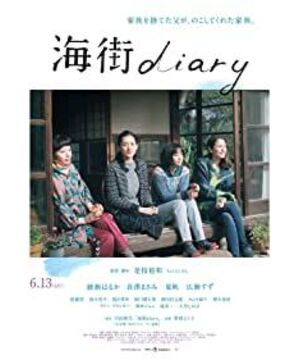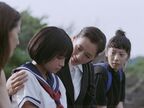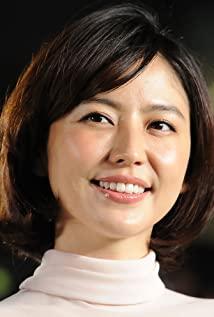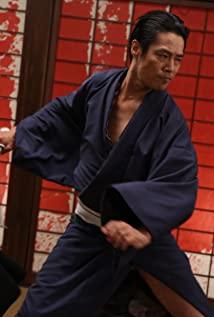"Little Forest" is divided into "Winter and Spring" and "Summer and Autumn". It tells that Ichiko, a girl from Komori, a rural village in northeastern Japan, returned to her hometown after suffering a setback in her life in the city. She lived alone in the wooden house left by her mother, experiencing summer and autumn. Details of life in the winter and spring seasons. "Little Forest" has no plot, and the above-mentioned causes and consequences just exist as a set board. What the lens captures is the firewood, rice, oil, salt and seasonal changes in the life of the city. The most beautiful and fresh fragments are selected and combined, as a postcard diary, which is usually presented to the eyes of the noisy urban life audience. "Little Forest" is a purely visual exhibition, with almost no use of film techniques, and lacks the purpose of artistic works. These four episodes of "Stories" are more like a set of recipes for the four seasons. After obvious processing and selection, in order to present the beauty of nature and the feelings of returning to the truth behind it, they are far from the real country life.
The "Diary of the Sea Street" also adopted a similar "diary" technique to record the family trivialities of the three sisters of the Koda family in the coastal town of Kamakura after their father's funeral and their half-sister Asano Suzu and the four sisters living together. Compared with the "Little Forest" series, Shige Hirokazu's lens language is richer, and his focus is more on the relationship and interaction between the characters, rather than the static look like a postcard. The four sisters came together because of a funeral, each with its own beauty. Two of the clips have reached the pinnacle of Japanese aesthetics:
First, the summer fireworks festival ended. Little sister Xiaoling wore the kimono given to her grandmother by her elder sister Koda Yuki. When she returned home, she found that the three sisters were all wearing the traditional summer. The Japanese kimono waited for her to set off fireworks under the plum tree in the backyard. The small fireworks illuminate the faces of the four people. The camera crosses the tatami mats from the room, penetrates the sliding windows and corridors, and shines into the evening courtyard as if framed in a painting, vividly.
The second is Xiaoling sitting in the back seat of her childhood boyfriend's bicycle and crossing the empty "cherry blossom tunnel". The two laughed unscrupulously. The cherry blossoms blooming on both sides of the road are as bright as snow, and the music is caressing, Xiaoling's young face Bright as a star, the spring breeze is blowing and the sun is like honey.
Fireworks and cherry blossoms are both short-lived and perishable things, and they are particularly brilliant in the short-term, which is a typical Japanese "sorrowful" aesthetic. There were indeed two funerals in "Haijie Diary", but the appearance of these aesthetic symbols did not give the film the slightest dark background. The four sisters saw the last silhouette of the beach from the beginning, and there was no contradiction between them. Disputes, including father, the most difficult topic to talk about, are all resolved in the sweet and harmonious daily life. Whether it’s green plum brewing or the closing of a small sea cat restaurant, all the troubles of life cannot affect the daily life of the Xiangtian sisters. Everything is effortless, and the beauty is so transparent and not like the world.
The only "disharmonious" sound in the movie comes from the aunt played by the old lady Shu Xilin. She reminded the eldest sister to carefully consider the decision to adopt Xiaoling. She also made peace with the two parties when the unreliable mother of the four sisters came home. Thing guy. To be honest, I think this old lady is the most human character in the whole movie. She calculates, she has a dark side, she is also amiable, she is real.
The lack of a dark undertone is the biggest miscalculation of "Haijie Diary". This simplification of the plot, which only selects the beautiful things in the lives of the four sisters to display, is the only way to display the natural and simple feelings in the "Little Forest" series. The starting point, deliberately avoiding the hard side of country life is the same. After reading the background, it turns out that both are adaptations of comics. From the characterization to the large structure, they are two-dimensionally transformed, which is simply beautiful.
Thinking of this level, I feel deeply regretful for Ee Hiro and this diary-you know, he is probably the director closest to Ozu in contemporary Japan. The 2008 "Non-stop" not only captured the atmosphere of Ozu, but also It captures the essence of Ozu-style Japanese family life-the details and corners are not perfect, and the various unsatisfactory aspects in life also deeply hinder the communication and understanding between people, but the real beauty transcends the small obstacles of stumbling and stumbling. The love in the world that slowly emerges in the flow of time is not a warm man and a virgin for no reason. Ozu's trust in the details and the calm handling of the shots are all because he believes that the truth can be seen between the lines, without whitewashing, and there is no need for two-dimensional screening for the audience.
The beauty expressed by Hirokazu Kee in "Haijie Diary" is certainly moving when you watch it, but it is empty beauty, free from the nourishment of the soil and the heaviness of the muddy earth, and is essentially the same as the rural postcards of the "Little Forest" series. same. This is not the flavor of Ozu at all, and it is farther away from the life of the four sisters described in the classic Japanese literature "Hoseki". This is a real diary and running account, which only records the epidermis of beauty, downgraded to the "eye-catching" level.
I am very disappointed that it is Hirokazu Edema who is superficial.
View more about Our Little Sister reviews











